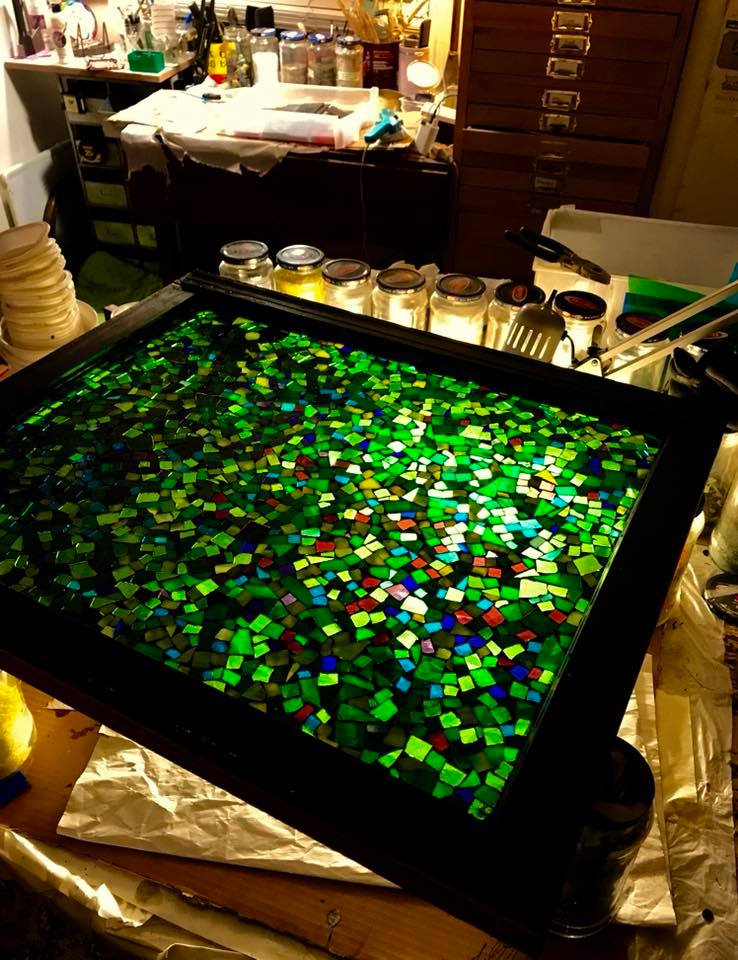Art & Peace: An Interview With Tony Nichols
Tony Nichols, whose work will be part of the Veterans Art Exhibit next year, said that art has been both his work and his coping strategy—and that he feels it’s important for every veteran to find something that helps them cope.
“When you get out, you’ve given enough, you’ve served enough,” he said. “Do what brings you joy.”
Nichols retired in 2013 after 23 years in the Army, and has been working in art for the past 16 years. He said he joined the Army after college.
“I wanted to have a little bit more adventure than I was having, so I enlisted in the army, and nine months later I was in Desert Storm,” he said. In 2006, he returned from Iraq after 75 days straight of combat, in which he was advising an Iraqi tank battalion.
“It was brutal, it was violent, and it was heartbreaking, seeing what men can do to each other, and you find out real quick,” he said. Like many veterans, he said the return home was difficult. “You have to pretend it’s never happened,” he said.
He said he struggled to process emotions and keep his drinking in check. For him, art was his coping strategy for what he said are lifelong ramifications of his combat experience.
“It never goes anywhere. It’s your ability to manage it,” he said. He said his wife, Janet, and his children, Gillian (20) and Elleri (17) have been huge supports as he’s found ways to manage his move from military to civilian life—and so has art.
During his time in the Army, he was also stationed in Fort Jackson, South Carolina, and he said it was there that he got started in art. Their rental home didn’t have window coverings, so Nichols decided to improvise, using dragon tear beads to make them. He said that was a gateway for him.
From there, he started developing a method of using small pieces of glass and a grouting process to mimic the look of a painting.
“I’m trying to make an impressionist painting out of glass,” he said. Most of his paintings deal with Kansas landscapes, flora, and fauna. “It inspires me every day,” he said.
He started selling his work at farmers markets in the area, and has been taking commissions for the last seven years. He said art also allowed him to transition his career successfully after the military, even though finding work after a military career can be difficult, since so few people understand what being a veteran means or how the skills transfer.
“It’s not an easy thing to go from being a Lieutenant Colonel to being an artist,” he said. The majority of his technique is self-taught, he explained. He’s always aiming for realism in his glass pieces, but he said the process of getting there has been a long one.
“I started out looking like someone in kindergarten drawing a stick man,” he said. The key to success, for him, has been hard work. “I have military discipline,” he said. “You get up and you work.”
Nor is discipline his work’s only tie to his military experience. Nichols said his art is also his way of choosing what he puts out in the world.
“As you get farther away from (military experience), you know, there was a lot of evil that I dealt on my fellow man,” he explained. “This is my way to give something back to the world.”
“I just want to make somebody smile,” he said.
And that benefit starts with him, Nichols said. “It just brings me peace,” he said of his work. “That’s it.”
He said he encourages other veterans to try art or other activities to help them transition back to civilian life.
“If there’s guys out there that needs something like that…find something to keep your hands busy, stay off the bottle, you’ll walk out of it,” he said.
You can follow Nichols’ work on Facebook or on Instagram @Tonytanker22.




